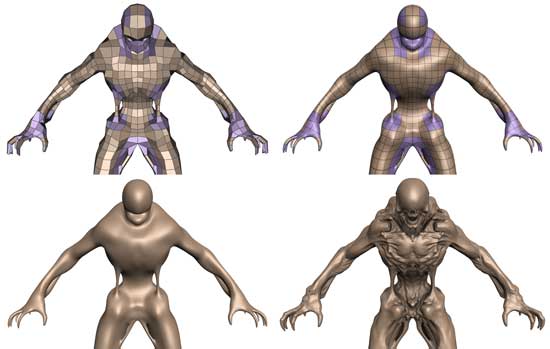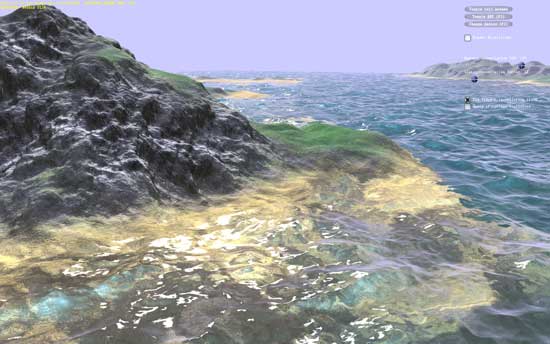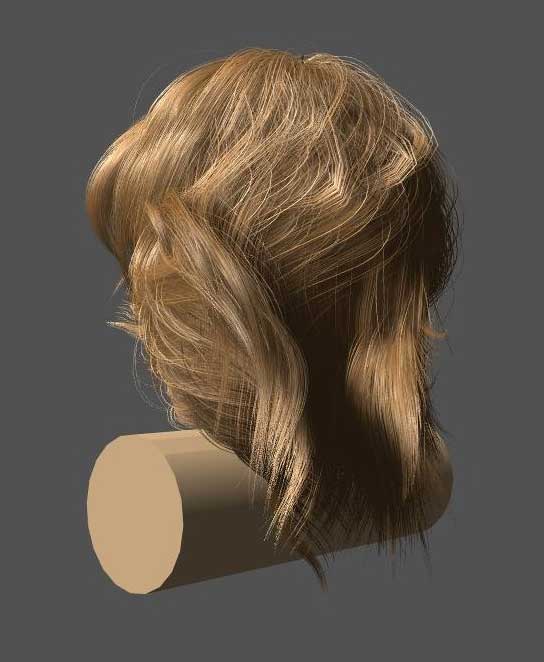Why NVIDIA Is Focused On Geometry
Up until now we haven’t talked a great deal about the performance of GF100, and to some extent we still can’t. We don’t know the final clock speeds of the shipping cards, so we don’t know exactly what the card will be like. But what we can talk about is why NVIDIA made the decisions they did: why they went for the parallel PolyMorph and Raster Engines.
The DX11 specification doesn’t leave NVIDIA with a ton of room to add new features. Without the capsbits, NVIDIA can’t put new features on their hardware and easily expose them, nor would they want to at risk of having those features (and hence die space) go unused. DX11 rigidly says what features a compliant video card should offer, and leaves you very little room to deviate.
So NVIDIA has taken a bit of a gamble. There’s no single wonder-feature in the hardware that immediately makes it stand out from AMD’s hardware – NVIDIA has post-rendering features such as 3D Vision or compute features such as PhysX, but when it comes to rendering they can only do what AMD does.
But the DX11 specification doesn’t say how quickly you have to do it.

Tessellation in action
To differentiate themselves from AMD, NVIDIA is taking the tessellator and driving it for all its worth. While AMD merely has a tessellator, NVIDIA is counting on the tessellator in their PolyMorph Engine to give them a noticeable graphical advantage over AMD.
To put things in perspective, between NV30 (GeForce FX 5800) and GT200 (GeForce GTX 280), the geometry performance of NVIDIA’s hardware only increases roughly 3x in performance. Meanwhile the shader performance of their cards increased by over 150x. Compared just to GT200, GF100 has 8x the geometry performance of GT200, and NVIDIA tells us this is something they have measured in their labs.
So why does NVIDIA want so much geometry performance? Because with tessellation, it allows them to take the same assets from the same games as AMD and generate something that will look better. With more geometry power, NVIDIA can use tessellation and displacement mapping to generate more complex characters, objects, and scenery than AMD can at the same level of performance. And this is why NVIDIA has 16 PolyMorph Engines and 4 Raster Engines, because they need a lot of hardware to generate and process that much geometry.
NVIDIA believes their strategy will work, and if geometry performance is as good as they say it is, then we can see why they feel this way. Game art is usually created at far higher levels of detail than what eventually ends up being shipped, and with tessellation there’s no reason why a tessellated and displacement mapped representation of that high quality art can’t come with the game. Developers can use tessellation to scale down to whatever the hardware can do, and in NVIDIA’s world they won’t have to scale it down very far to meet up with the GF100.
At this point tessellation is a message that’s much more for developers than it is consumers. As DX11 is required to take advantage of tessellation, only a few games exist while plenty more are on the way. NVIDIA needs to convince developers to ship their art with detailed enough displacement maps to match GF100’s capabilities, and while that isn’t too hard, it’s also not a walk in the park. To that extent they’re also extolling the other virtues of tessellation, such as the ability to do higher quality animations by only needing to animate the control points of a model, and letting tessellation take care of the rest. A lot of the success of the GF100 architecture is going to ride on how developers respond to this, so it’s going to be something worth keeping an eye on.

NVIDIA's water tessellation demo

NVIDIA's hair tessellation demo










115 Comments
View All Comments
x86 64 - Sunday, January 31, 2010 - link
If we don't know these basic things then we don't know much.1. Die size
2. What cards will be made from the GF100
3. Clock speeds
4. Power usage (we only know that it’s more than GT200)
5. Pricing
6. Performance
Seems a pretty comprehensive list of important info to me.
nyran125 - Saturday, January 30, 2010 - link
You guys that buy a brand new graphics card every single year are crazy . im still running an 8800 GTS 512mb with no issues in any games whatso ever DX10, was a waste of money and everyones time. Im going to upgrade to the highest end of the GF100;s but thats from a 8800 GTS512mb so the upgrade is significant. Bit form a heigh end ati card to GF 100 ?!?!?!? what was the friggin point in even getting a 200 series card.!?!?!!?1/. Games are only just catching up to the 9000 series now.Olen Ahkcre - Friday, January 22, 2010 - link
I'll wait till they (TSMC) start using 28nm (from planned 40nm) fabrication process on Fermi... drop in size, power consumption and price and rise is clock speed will probably make it worth the wait.It'll be a nice addition to the GTX 295 I currently have. (Yeah, going SLI and PhysX).
Zingam - Wednesday, January 20, 2010 - link
Big deal... Until the next generation of Consoles - no games would take any advantage of these new techs. So? Why bother?zblackrider - Wednesday, January 20, 2010 - link
Why am I flooded with memories of the 20th Anniversary Macintosh?Zool - Wednesday, January 20, 2010 - link
Tesselation is quite resource hog on shaders. If u increase polygons by tenfold (quite easy even with basic levels of tesselation factor) the dissplacement map shaders needs to calculate tenfold more normals which ends in the much more detailed dissplacement of course. The main advatage of tesselation is that it dont need space in video memmory and also read(write ?) bandwith is on chip but it actualy acts as you would increase the polygons in game. Lightning, shadows and other geometry based efects should act as on high polygon models too i think (at least in uniengine heaven u have shadows after tesselation where before u didnt had a single shadow).Only the last stage of tesselator the domain shader produces actual vertices. The real question would be how much does this single(?) domain shader in radeons keep up with the 16 polymorph engines(each with its own tesselation engines) in gt300.
Thats 1(?) domain shader for 32 stream procesors in gt300(and much closer) against 1(?) for 320 5D units in radeon.
If u have too much shader programs that need the new vertices cordinations the radeon could end up being realy botlenecked.
Just my toughs.
Zool - Wednesday, January 20, 2010 - link
Of course ati-s tesselation engine and nvidias tesselation engine can be completly different fixed units. Ati-s tesselation engine is surely more robust than a single tesselation engine in nvidias 16 polymorph engines as its designed for the entire shaders.nubie - Tuesday, January 19, 2010 - link
They have been sitting on the technology since before the release of SLi.In fact SLi didn't have even 2-monitor support until recently, when it should have had 4-monitor support all along.
nVidia clearly didn't want to expend the resources on making the software for it until it was forced, as it now is by AMD heavily advertising their version.
If you look at some of their professional offerings with 4-monitor output it is clear that they have the technology, I am just glad they have acknowledged that it is a desire-able feature.
I certainly hope the mainstream cards get 3-monitor output, it will be nice to drive 3 displays. 3 Projectors is an excellent application, not only for high-def movies filmed in wider than 16:9 formats, but games as well. With projectors you don't get the monitor bezel in the way.
Enthusiast multi-monitor gaming goes back to the Quake II days, glad to see that the mainstream has finally caught up (I am sure the geeks have been pushing for it from inside the companies.)
wwwcd - Tuesday, January 19, 2010 - link
Maybe I'll live to see if Nvidia still wins AMD / Ati, a proposal which is as leadership price / performance, or even as productivity, regardless of price!:)AnnonymousCoward - Tuesday, January 19, 2010 - link
They should make a GT10000, in which the entire 300mm wafer is 1 die. 300B transistors. Unfortunately you have to mount the final thing to the outside of your case, and it runs off a 240V line.